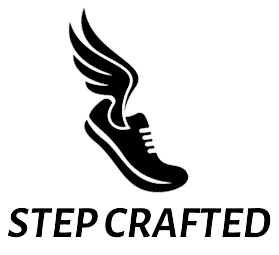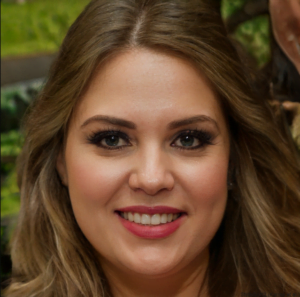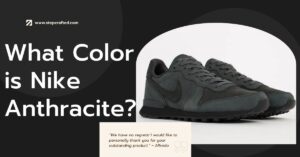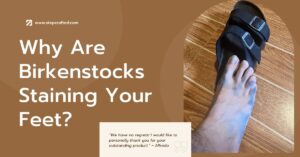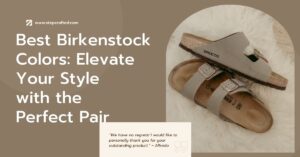As a runner who has experienced both the highs and lows of various running shoes, my journey with Hokas One One has been a rollercoaster of comfort and discomfort.
Contents
ToggleI vividly recall the day I switched to Hokas, drawn by their maximal cushioning and thick soles.Hokas Causing Foot Pain?
Initially, they seemed like great shoes, a genie granting my wishes for better support. However, soon I noticed an unusual pain in the forefoot of my right foot.
Hoka Bondi and Hoka Gaviota 3 initially seemed promising, but their rocker design, though intended to prevent injuries, ironically, became a source of discomfort for me.
My standard size, a size 12 in Bondi, and a size 11.5 in 2E width for Gaviota 3 weren’t the issues.
It was the lateral pain and squeezing effect that felt like a ‘racing seat’ sensation, particularly noticeable in the Clifton model, which was narrower than expected.
This squeeze on my wide feet led to a condition resembling metatarsalgia, a far cry from the injured state I was trying to avoid.
In search of relief, I sought Dr’s help and changed the brand of my shoes. This decision improved my condition significantly.
Despite the popularity of minimalist running shoes and the trend of barefoot running, I realized that Hoka’s design wasn’t the ideal fit for every runner.
stiff soles and unique rocker mechanism, while beneficial for some, didn’t align with my foot’s needs.
Interestingly, the shift to a different brand, with less emphasis on maximal cushioning and a more traditional approach, made a world of difference.
This personal experience highlights the importance of choosing the right type of footwear based on the individual foot structure and running style.
Hokas, despite their acclaim, might not be the universal solution for every runner’s quest for comfort and injury prevention.
Many Runners Are Finding “Hoka One One Hurt My Feet.” Here’s Why
In the world of running, the rise of maximalist running shoes like Hoka One One has been a significant trend.
These shoes are renowned for their thick, cushioned soles, designed to reduce impact forces and injury risk for runners.
However, not all is well in paradise. Many, including myself, have discovered that these maximal cushioning trainers may be contributing to foot pain and other running injuries.
A small study involving female runners running a 5k on a treadmill compared the effects of maximal shoes, specifically the Hoka One One Bondi 4, with regular running shoes like the New Balance 880, which have traditional cushioning.
The biomechanical data collected showed significant differences in vertical loading rates and peak impact forces.
While maximalist shoes are designed to absorb more shock, ironically, they might increase the strain on the foot and lower limb.
This could be the reason why many are finding these shoes hurt their feet, contradicting their initial promise of reducing injury risk.
In my experience, the transition from traditional to maximalist footwear was not as smooth as expected.
The maximal cushioning felt different, and my feet struggled to adapt to the new dynamics.

Initially, I believed these shoes would reduce my risk of getting injured, but instead, I found myself grappling with new discomforts.
This insight serves as a guide for runners like myself who are exploring different footwear options.
It’s crucial to understand that while maximalist shoes offer benefits, they might not be suitable for everyone.
Each runner’s feet respond differently to various types of cushioning and support.
Why Do Runners Like Hoka One One Running Shoes?
Running-related injuries are a common concern, with surveys and research literature indicating that many runners suffer an injury at some point during their training.
As someone who’s been sidelined for days, weeks, or even months due to injuries, achieving that PR or participating in a race becomes a distant dream.
To prevent these setbacks, the main factors in my choice of running shoes have always been comfort and injury prevention.
This is where Hoka One One running shoes enter the picture, known for their thick cushioning, designed to protect the feet and legs from the impact stresses of running.
However, despite their popularity, there’s a growing discussion among runners about whether these maximalist shoes prevent or hurt more.
While their thick cushioning acts as a shock absorber for the bones and joints, reducing stress on the ankles, shins, knees, and hips, the foam sole provides a buffer against the ground, helping to absorb the impact forces and shock.
The result is a supremely comfortable experience, often described as cloud-like cushioning.
However, there’s a flip side. Some runners, particularly rearfoot strikers, find that the excessive cushioning alters foot biomechanics, potentially increasing the risk of injuries.
In my journey, switching to Hoka One One initially felt like a relief for my legs, but over time, I realized it wasn’t a one-size-fits-all solution.
While they’re incredibly comfortable, they might not suit everyone’s running style. This highlights the need for a personalized approach when choosing running shoes, balancing between comfort, natural stride, and the risk of injuries.
Can Hokas Reduce The Risk Of Injury?
In the quest for the perfect running shoes, many, including myself, have turned to Hoka running shoes for their maximal cushioning.
This design is thought to help the body absorb force more effectively, potentially reducing the risk of injury.
Podiatrists and shoe experts often recommend them, especially for runners looking to ditch their least cushioned footwear.
But the real question is: do they minimize injury, or could they be contributing to different kinds of stress on the foot and lower limb?
A small study compared the plantar pressure of runners wearing a minimalist running shoe like the New Balance Minimus Hi–Rez against those in maximal running shoes.
The findings suggested a reduction in forefoot stress in maximalist shoes, which could potentially decrease foot injuries like metatarsalgia, metatarsal stress fractures, plantar fasciitis, Morton’s neuroma, bunions, and fat pad atrophy.
However, there’s a flip side. The rocker sole design of Hokas, while aiding in heel-to-toe transition, might minimize foot motion to a degree that could weaken foot muscles.
This could be a concern for healthy runners, though it may benefit those with conditions like arthritis in their feet or tarsal tunnel syndrome.
From my personal experience, while Hokas initially seemed to alleviate some issues, over time, they seemed to create new weak areas in my feet, hinting at an increased injury risk in different parts.
This underscores the fact that there is no one-size-fits-all solution when it comes to running shoes.
Each runner has unique needs and must consider various factors before picking the best running shoes.
So, while Hokas might be a boon for some, they might not be the best choice for others. The advice I’ve gathered from various experts always circles back to one thing understanding your own body and needs is the best guide in selecting footwear.
Hokas Causing Foot Pain?
Reason, Prevention, and Remedies
Hoka shoes, popular for their thick cushioning and lightweight design, have become a staple for many runners and walkers.
However, some wearers, including myself, have experienced foot pain that seems to stem from this very feature.
This article aims to explore the cause of this discomfort and offer solutions to reduce or eliminate these unpleasant sensations.
The distinctively cushioned soles of Hoka shoes can initially be a shock to the system, particularly for first-time users. It’s not uncommon to feel pain as your feet adjust to the cushioning and support these shoes offer.
The shape and design, while comfortable for running or walking over a long period, might not suit everyone right out of the box.
To alleviate this issue, it’s crucial to ensure a proper fit. Getting professionally fitted for running shoes that match your arch type—be it high arches or flat feet—can prevent unnecessary strain on the tendons and ligaments in your feet.
Additionally, if you’re new to Hokas, start by wearing them around the house for a short period to let your foot arch muscles adapt to the extra cushioning.
This gradual approach can help alleviate initial pressure points and discomfort. If pain persists, consider using over-the-counter supportive insoles to further customize the fit and feel.
It’s important to note that while Hokas are designed to be comfortable, they might not be the right choice for everyone, especially if you’re prone to blisters, knee, hip, or back pain with extended use.
Always ensure your shoes are sized correctly before ordering or wearing them for prolonged periods.
Why Hoka Shoes May Hurt Your Feet?
Many of us, including myself, have faced the trouble of finding a pair of Hoka shoes that fit right.
Often, what seems like a perfect match in the store can manifest into a nightmare when the stitching rubs against the foot, or when too-small sizes squeeze and pinch, leading to discomfort.
This poor-fitting footwear can easily cause blisters and discomfort, especially when worn for extended periods.
The key is to switch to the type of shoe sized correctly for your feet, ensuring that the fit is neither too tight nor too loose.
Unsupported Feet: The Dilemma with Hoka Shoes
Many runners and walkers have found that while Hoka shoes are designed to provide extra cushioning, they sometimes fall short in supporting the arch and heel, leading to feet.
Comparing these models to other running or walking sneakers, it’s clear that while Hokas excel in cushioning, they might not adequately support the natural movement of the foot from heel strike to toe-off.
Inappropriate Footwear: The Hoka Shoes Dilemma
A common issue many, including myself, have encountered with Hoka shoes is that they might cause pain in the feet when not suitable for the activity performed.
For instance, while they are excellent for distance running on asphalt roads, they may not be ideal for playing sports like soccer, which require additional stability.
This mismatch often arises from a lack of attention in the shoe choice and selection processes.
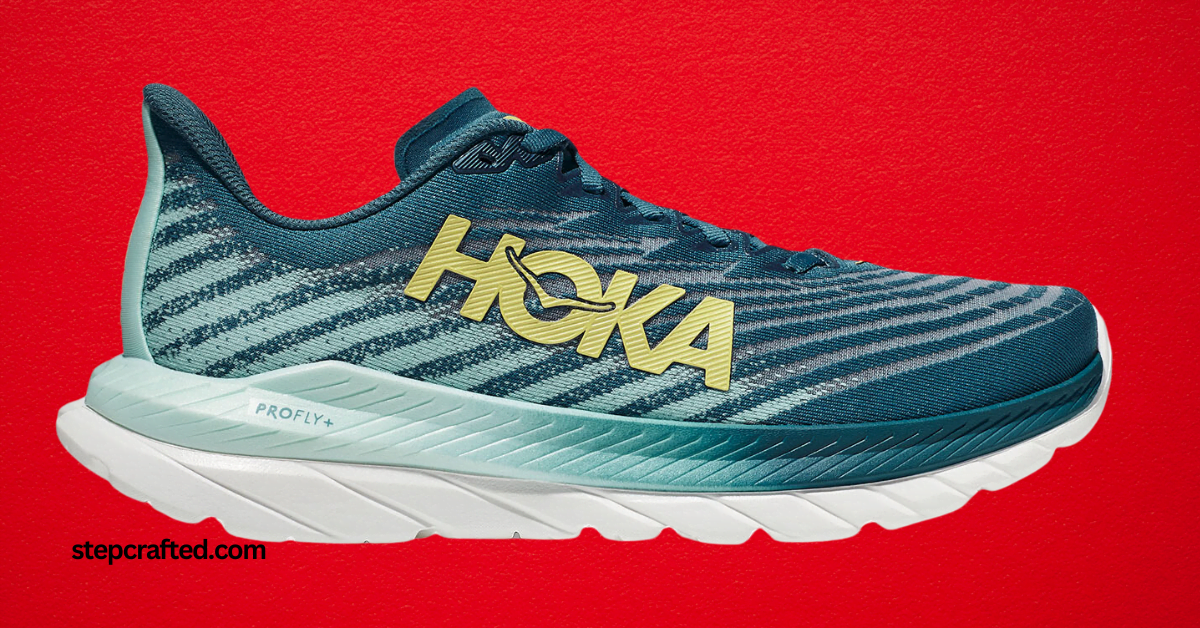
Typical Hokas, when compared side-by-side with sports-specific shoes, may not be the right pick for activities beyond jogging or long-time walking.
Their cushioning is great for light physical activities around the house but may not provide the necessary support and stability, with excess padding and shock absorption being less effective for dynamic exercise.
Hoka Shoes: Preventing Foot Pain
As a runner who has navigated the ups and downs of various footwear, I’ve learned a few prevention tips to avoid foot pain when wearing Hoka shoes.
The first step is ensuring a proper fit. Unlike traditional running shoes, Hokas often have a unique fit due to their thick cushioning and design.
Therefore, getting your feet measured and possibly going a half size up can make a significant difference. Secondly, it’s essential to gradually break in your Hokas.
Start by wearing them for short periods around the house or on brief walks. This gradual introduction allows your feet to adjust to the new cushioning and support system.
Another key aspect is to listen to your body. If you experience discomfort or pain, it’s important to assess whether the shoes are the right choice for your specific foot type and running style.
Sometimes, adding custom orthotics or insoles can provide the additional support needed. Lastly, alternate your Hokas with other footwear.
This practice not only extends the life of the shoes but also helps prevent overuse injuries that might arise from the continuous use of one type of cushioning or support.
By following these steps, you can enjoy the benefits of Hokas while minimizing the risk of foot pain.
Top Insoles for Enhanced Comfort in Hoka Shoes
In my experience as a runner who has faced foot pain while wearing Hokas , finding the right insoles can transform a painful run into a comfortable running experience.
The key is to choose insoles designed to provide arch support and extra cushioning, which can significantly reduce discomfort.
Materials like foam or gel are ideal as they are durable, offer a firm feel, and help control foot motion. This is crucial to prevent issues like overpronation or supination, common causes of foot pain.
Additionally, opting for removable insoles makes it easier to clean and maintain them, ensuring they last longer.
This is especially helpful if your Hoka shoes have non-removable insoles that don’t offer the necessary support.
Hoka Foot Pain: Professional Treatments
Chronic foot pain, especially when severe and debilitating, can significantly impact our daily lives. For those experiencing this discomfort due to Hoka shoes, exploring treatment options is crucial.
As someone who has navigated this journey, I found that physical therapy is an effective treatment. Physical therapists can recommend specific exercises and stretches to strengthen the feet, reduce inflammation, and alleviate symptoms.
These exercises also help correct movement patterns that might exacerbate issues.
In addition to physical therapy, orthotics tailored to your arch shape and gait mechanics can offer significant support, relieving discomfort by distributing pressure more evenly while walking or running.
For some, chiropractic manipulation can improve joint mobility and posture, particularly in tight muscles and joints in the lower extremities, including the ankle, knee, hip, and lower back.
This helps to align and ensure these parts work together effectively. Additionally, foam rolling can Cause these discomforts and can lead to further complications, so seeking professional help early is key to preventing untreated chronic pain.
FAQs
Is Plantar Fasciitis Caused by Hoka Shoes?
Plantar fasciitis, a common and painful foot condition involving inflammation of the plantar fascia, the connective tissue in the feet, raises questions about the impact of Hoka shoes with their thick soles and cushioning design.
While it is not specifically known that Hokas cause plantar fasciitis, certain factors related to these shoes can contribute to the problem.
The extra padding is designed to absorb shock, but if the fit is Incorrect or the selection of shoe size is not right, it can exacerbate the issue.
The increased thickness of the sole might lead to choosing the wrong sizes, and a fitting shoe increases pressure on the heels and toes, straining the already weak ligaments.
To prevent this, choosing the right shoe that fits properly is crucial. Shoes that rub or apply excessive pressure on any part of the foot can cause more harm than good. It’s also important to wear shoes appropriate for the day’s activity.
Additionally, factors like a poor warm-up before exercise can lead to severe pain. Incorporating static stretching and exercises like calf raises can help prepare the muscles for activity, providing adequate protection and shock absorption.
Despite their thick sole designs, which are often seen as a way to prevent such problems, it’s important to always warm up before exercising and choose footwear that suits your specific needs.
Are Hoka Shoes Good for People with Foot Problems?
When it comes to Hoka shoes and foot problems, the answer isn’t straightforward. Known for their cushioning, these shoes can be beneficial for activities like walking and running, but only if they are fitted properly.
For individuals with existing conditions like bunions or plantar fasciitis, the key to maximizing comfort with any footwear, including Hokas, lies in choosing the right footwear.
This means looking for shoes with extra depth in the toe box and adequate stability components for support.
The appropriate size, foot shape, and width are also essential to consider, especially when dealing with foot pain.
The enhanced cushioning in Hoka’s athletic shoe styles can be beneficial for those with certain foot issues, but it’s critical when choosing and evaluating different models for your purchase decision.
How a shoe affects the overall fit can either alleviate or exacerbate foot problems. In my experience, while Hokas can reduce pressure and minimize symptoms for some, they can also hurt others if not chosen carefully.
Therefore, it’s crucial to consider all aspects of the shoe, including its cushioning, fit, and support features, to ensure they align with your specific foot needs.
Why Do Podiatrists Recommend Hoka Shoes?
Podiatrists often recommend Hoka shoes because of their unique cushioning and sole design, which helps reduce the risk of injury and ensures maximum comfort for the foot.
These shoes are designed to keep the foot protected against common foot injuries such as plantar fasciitis, Achilles tendonitis, bunions, and neuromas.
The exceptional support and shock absorption provided by the lightweight materials and breathable fabric of the upper part of the shoe make them a favorite among exercising athletes, whether for workouts or races.
Additionally, the midsole foam offers an extra boost of energy, while the stability features help with balance control, making them suitable for walking, especially for those with chronic pain, arthritis, or diabetes.
The interior of Hoka shoes is typically without seams that might irritate sensitive skin, providing comfort around the foot and toes for those who remain active.
This design aspect is key in preventing painful foot issues that might arise from regular athletic shoes. The focused approach of Hoka shoes in cushioning and supporting the foot aligns with the advice of many podiatric doctors for a healthy daily routine.
While popular for their ability to help users perform better, these shoes are primarily valued for protecting against injuries.
However, despite their many benefits, it’s important to note that Hoka shoes, due to their design, might not suit everyone, and in some cases, Hokas can hurt if not chosen or used correctly.
What is the best Hoka shoe for plantar fasciitis and Flat Feet?
While Hoka shoes are renowned for their cushioning and comfortable feel, not all models suit everyone, especially those suffering from plantar fasciitis and flat foot problems.
As someone who has navigated the tricky landscape of finding the right footwear, I’ve learned that the Hoka Bondi 7 stands out as a superior choice.
This model is designed to reduce pressure on affected areas, offering an ample heel and forefoot support. It’s a game-changer for those long runs or walks, ensuring a comfortable ride.
The Bondi 7 boasts a generous amount of foam, providing that signature cushioned feel Hoka is known for.
The engineered mesh upper enhances breathability while ensuring a secure fit, vital for those with flat feet. Its deep, arch-supportive design is a relief for plantar fasciitis sufferers.
The CMEVA cushioned midsole efficiently absorbs shock with every step, minimizing the painful pains that often hit hard during activity.
An added bonus is the Rocker geometry, aiding in rolling smoothly through each step, a blessing for those with painful feet.
The rubber pods, strategically placed on the sole, maximize traction on wet surfaces, providing a reliable grip on slippery terrain such as grass and dirt paths. This makes the Bondi 7 ideal for conditions typically unsuitable for traditional running shoes.
From personal experience, the transition to Hoka Bondi 7 was a pivotal moment. As someone who struggled with flat feet and the discomfort that comes with it, these shoes have been nothing short of a revelation.
Their excellent support and comfort have allowed me to enjoy my runs and walks without the constant reminder of foot discomfort.
Why is Hokas Hurting my Feet?
A recent study revealed that while highly cushioned shoes, like Hokas, are praised for comfort, they can inadvertently lead to foot issues.
These shoes often have a higher vertical load rate and instantaneous loading, which, contrary to expectations, can promote overuse injuries.
For someone like me, who initially embraced the plush comfort of Hokas, this was a surprising discovery. The softness, rather than absorbing impact, can lead to increased stress on the feet.
This is particularly relevant for those suffering from plantar fasciitis, as the cushioning can exacerbate the condition rather than alleviate it.
The irony is inescapable; the very features that make Hokas attractive are what might be hurting our feet.
Why do Hokas make my legs Hurt?
While Hokas are favored by many for their cushioning, they can sometimes affect the knees and legs adversely. This is particularly noticeable among runners who are not used to the low-pressure drop these shoes provide.
The design of Hokas, which is meant to ease the heel strike, can alter the natural gait of a runner. This alteration, albeit subtle, can lead to discomfort or even pain in the knees and legs over time.
Speaking from personal experience, the transition to Hokas initially led to unexpected knee discomfort, highlighting the importance of considering how the unique structure of these shoes can impact leg health.
How long does it take to break in Hokas?
When it comes to Hokas, a common query among runners is the time it takes to break into these popular running shoes. Unlike many traditional shoes, Hokas have a distinct break-in period.
From my experience, a new pair of Hokas can take several weeks to a few months to be fully broken in. This is due to their unique cushioning and structure, particularly around the heels.
It’s important to be patient and wear them often during this period. Despite being an exception in the shoe world, the break-in process is crucial for achieving the optimum comfort and support that Hokas are famed for.
Is Hokas that Comfortable?
Hokas are often recommended for those who run, jog, or walk long distances, acclaimed for being extremely light with ample cushion and support. As a regular jogger, I’ve found Hokas to be a game changer, especially for longer distances.
Their lightweight design coupled with superior cushioning minimizes foot fatigue. Renowned chiropractor, Matt Tanneberg, CSCS, also recommends wearing Hokas for both walking and running activities.
Their structure provides the necessary support, significantly reducing strain on the feet and joints. From a personal standpoint, the transition to Hokas has been a positive experience, especially for my daily runs and walks.
